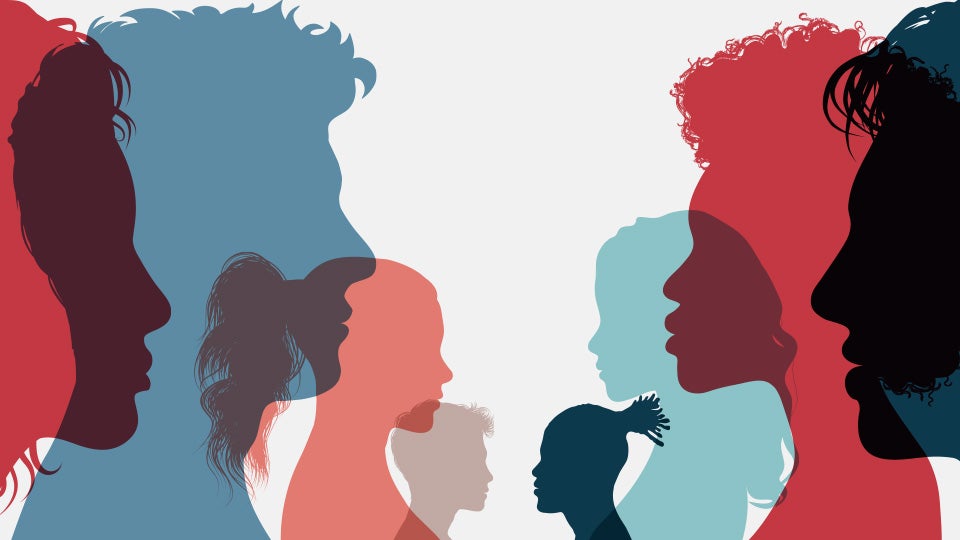Create a culture that means business™
Email address
Despite a vocal gender equality movement active since the middle of the 20th century, women are still paid less and are less likely to reach senior leadership levels compared to their male counterparts. With International Women’s Day (March 8) approaching, many companies will be running programs and initiatives to highlight the women at their organization.
Diversity, equity, inclusion, and belonging remain top concerns, with 84% of HR leaders saying they are a “high priority” for their organization, according to the 2023 Engagement and Retention Report.
Women feel less engaged and a lower sense of belonging
According to the latest research from Achievers Workforce Institute, women are 23% less engaged than men and are 28% less likely to feel a strong sense of belonging.
Women are 23% less engaged than men and are 28% less likely to feel a strong sense of belonging.
Why does it matter that women are less engaged?
It matters that women are less engaged because engagement at work strongly correlates with retention. As half the workforce, if women are on average less engaged, then they may also be job hunting, leading to higher turnover. Despite a predicted recession, it is still a tight talent market, so business leaders need to prioritize retaining top talent. When trends like these are identified for a large group within the workforce, employers must take action to prevent high turnover.
What could be impacting women’s lower engagement?
One possible cause of lower engagement for women is that women are less likely to be recognized frequently. Just 15% of women are recognized weekly, compared to 21% of men. At the other extreme, 17% of women say they are never recognized, compared to just 12% of men.
Just 15% of women are recognized weekly, compared to 21% of men.
Recognition is a crucial driver of engagement and belonging. If women are being recognized less frequently, they’re not getting the regular increase in engagement that male employees are getting.
How can employers increase recognition for women?
HR leaders who want to increase recognition for women can run specific campaigns to increase recognition frequency for all employees and should educate people leaders on this gap to inspire action at the front line. The right recognition platform, that integrates with the HRIS, will enable organizations to measure this gap for themselves to determine whether action is required. Measuring the difference between recognition frequency for men and women at your organization should be the first step to establish a baseline that you can improve on.
Are other marginalized groups similarly affected?
AWI looked at a range of marginalized groups including people with disabilities, those who identify as LGBTQIA2S+, and Black, Indigenous, or people of color (BIPOC). When asked to identify their gender, a non-binary gender option was included, however, this group was too small to serves as a statistically significant sample in analyses.
Overall, there were few significant differences identified across most of these groups, however, a few trends did stand out.
1. Employees with disabilities need work flexibility
Work flexibility was even more important than average for respondents with disabilities, many of whom may have found the remote options during the pandemic to be a benefit compared to potential workplace accessibility issues.
2. LGBTQIA2S+ workers are more likely to feel they belong
LGBTQIA2S+ respondents were almost 50% more likely to say they feel a strong sense of belonging at work. This is positive news for a group that has historically been marginalized, with many having to historically hide aspects of their home lives from their colleagues.
3. BIPOC people crave connection
Respondents who self-identified as BIPOC are more likely to be looking for real-time ways to connect with their colleagues. They are 44% more likely to want more virtual networking events during work hours, 30% more likely to support being brought into the office for occasional in-person events, and 29% more likely to want technology solutions for building relationships with coworkers. As a group that may be a visible minority in the office, finding new ways to connect with their colleagues could be crucial for building a sense of belonging — especially when it comes to the pillars of inclusion and connection.
Embracing and including historically marginalized groups
Diversity, equity, inclusion, and belonging are not just buzz words. Research shows that diverse organizations outperform their less-diverse peers. People who feel including and connected at work will stay longer and put in more discretionary effort. The business case is there for business leaders who want their organizations to excel, and it begins with belonging at work as the north star for HR practices.
How do recognition and DEI connect?
At large organizations, DEI initiatives and recognition programs are usually managed by separate individuals or teams. However, AWI research shows that organizations that integrate these efforts are able to improve business results.
The AWI D&I Insights Report found that companies that integrate recognition with D&I are three times more likely to have engaged employees and are twice as likely to financially outperform their industry.
What does it take to integrate DEI with recognition?
Integrating DEI and recognition can be as simple as getting the two leaders in a room to discuss where their efforts overlap.
Here are some ideas of how you could use each program to support the other:
1. Add recognition to existing D&I initiatives
One Achievers customer added a recognition component to an existing D&I week initiative. By encouraging employees to recognize each other for D&I initiatives and efforts, they saw a more than 200% increase in recognition year over year, demonstrating how the two programs can support and improve each other.
2. Create D&I recognition opportunities
Consider adding a recognition for D&I efforts to your program. One company created a recognition category for D&I supportive behavior and has seen approximately 100 recognitions a month in this category. This emphasizes to employees that D&I is a strong part of company values and recognizing these behaviors makes it more likely they will be repeated in the future.
3. Use recognition data to assess D&I trends
Make the most of recognition data to identify language trends. In concert with the Achievers data science team, one customer assessed language patterns between recognition for men and for women. They were able to find specific differences in the words used, which will help inform their recognition training programs going forward.
Learn more about 2023 engagement and retention trends in the latest report from Achievers Workforce Institute .




